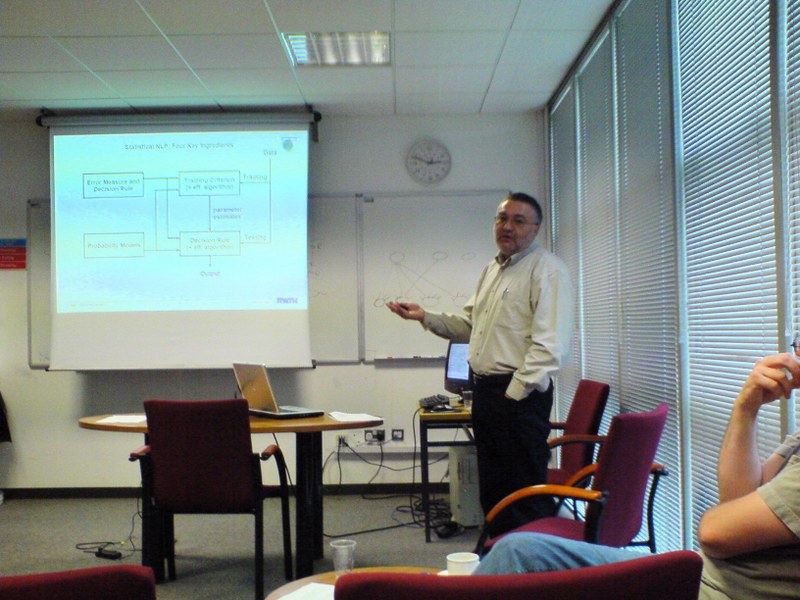Lecture: Automatic Speech Recognition: From Statistical Decision Theory to Machine Learning and Neural Networks. and a Tutorial: Human Language Technology and Machine Learning
27/04/2016
They will be taught by Professor Hermann Ney of the RWTH University (Germany). The seminar is aimed at undergraduate, master, and doctoral students with knowledge in pattern recognition and / or speech processing. The tutorial is aimed at engineers and computer scientists in general. These events are organized by the Speech Processing Group of TALP-UPC
Lecture: Automatic Speech Recognition: From Statistical Decision Theory to Machine Learning and Neural Networks.
Date: Wednesday April 27th from 8:00 to 10:00 and Friday April 29th from 10:00 to 11:00
Place: UPC Campus Nord Building D5. MERIT Room D5-010
Abstract: The last 40 years have seen a dramatic progress in machine learning and statistical methods for speech and language processing like speech recognition, handwriting recognition and machine translation. Most of the key statistical concepts had originally been developed for speech recognition. Examples of such key concepts are the Bayes decision rule for minimum error rate and probabilistic approaches to acoustic modelling (e.g.hidden Markov models) and language modelling. Recently the accuracy of speech recognition could be improved significantly by the use of artificial neural networks, such as deep feedforward multi-layer perceptrons and recurrent neural networks (incl. long short-term memory extension). We will discuss these approaches in detail and how they fit into the probabilistic approach.
------------------------------------------------------------------------------
Tutorial: Human Language Technology and Machine Learning
Date: Wednesday April 27th from 12:00 to 13:00
Place: UPC Campus Nord Building B3. Multimedia Room (entrance by Plaza Telecos)
Abstract: The last 40 years have seen a dramatic progress in machine learning for recognizing speech signals and for translating spoken and written language. This talks will present a unifying view of the underlying statistical methods including the recent developments in deep learning and artificial neural networks. In particular, the talk will address the remarkable fact that, for these tasks and similar tasks like handwriting recognition, the statistical approach makes use of the same four principles:
1) Bayes decision rule for minimum error rate;
2) probabilistic models like hidden Markov models and artificial neural networks;
3) training criteria and algorithms for estimating the free model parameters from large amounts of data;
4) the generation or search process that generates the recognition or translation result. Most of these methods had originally been designed for speech recognition.
However, it has turned out that, with suitable modifications, the same concepts carry over to language translation and other tasks in natural language processing.
----------------------------------------------------------------------------
Short bio:
Hermann Ney is a full professor of computer science at RWTH Aachen University, Germany. His main research interests lie in the area of statistical classification, machine learning and human language technology and specific applications to speech recognition, machine translation and handwriting recognition. In particular, he has worked on dynamic programming and discriminative training for speech recognition, on language modelling and on phrase-based approaches to machine translation.
His work has resulted in more than 700 conference and journal papers (h-index 82, estimated using Google scholar). He is a fellow of both IEEE and ISCA (Int. Speech Communication Association). In 2005, he was the recipient of the Technical Achievement Award of the IEEE Signal Processing Society. In 2010, he was awarded a senior DIGITEO chair at LIMIS/CNRS in Paris, France. In 2013, he received the award of honour of the International Association for Machine Translation. In 2016, he was awarded an ERC advanced grant.

Comparteix: